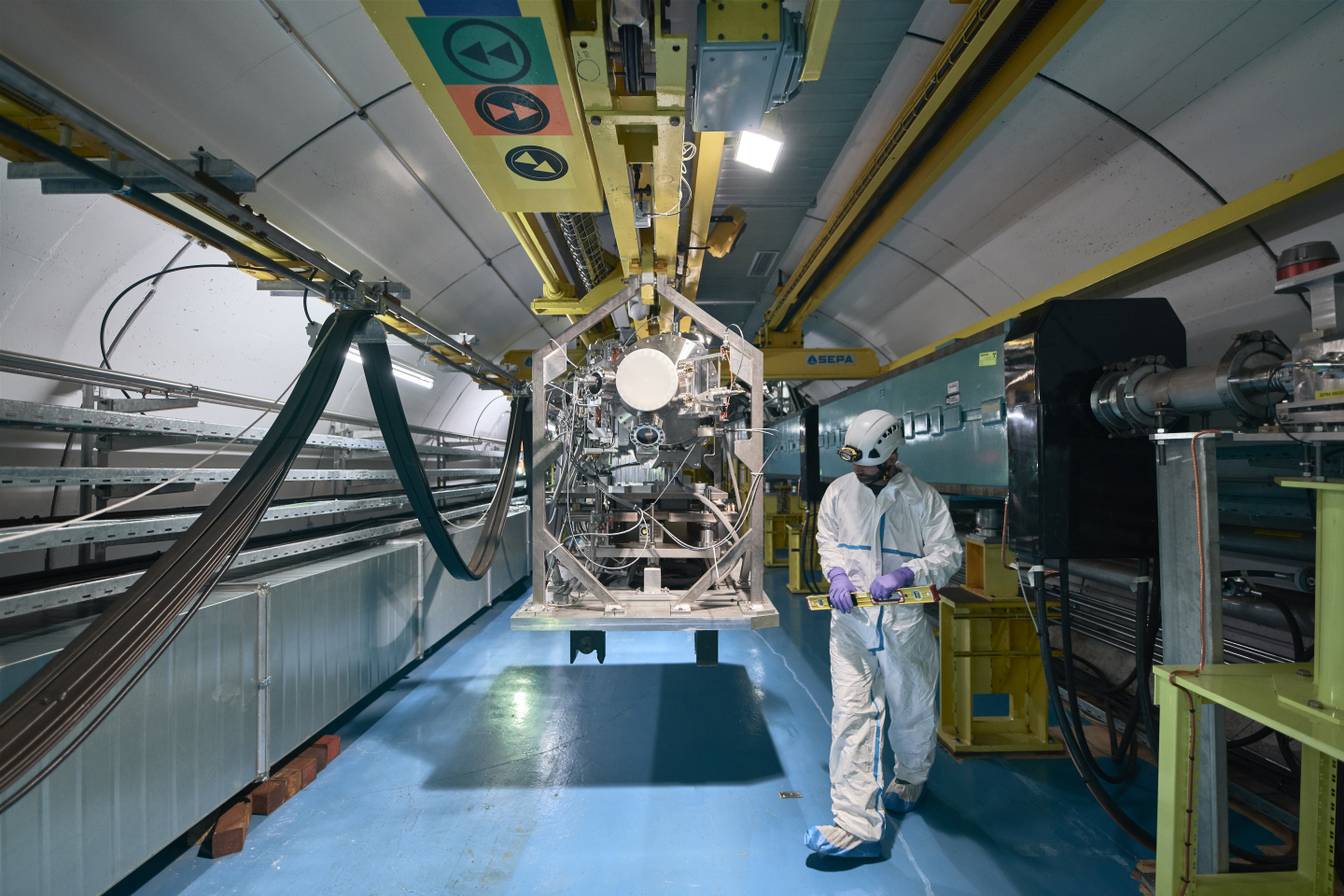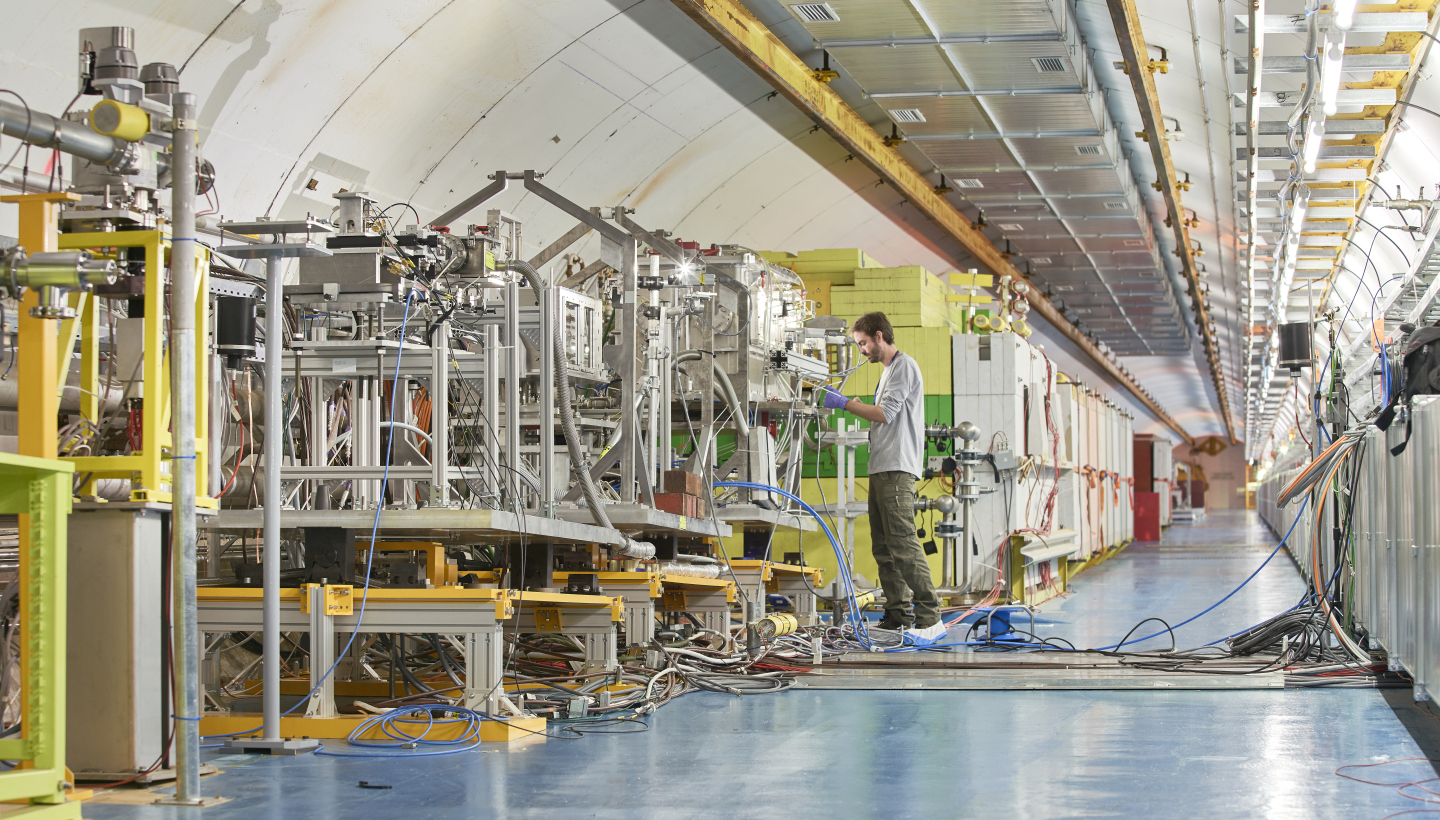At the end of August this year, as the summer was taking its time to fade away, a component for the High-Luminosity LHC’s army of protectors was successfully tested.
The TDIS (target dump injection segmented) is a machine-protecting device for the LHC equipment, located close to the point at which particles are injected from the Super Proton Synchrotron (SPS). Developed as an upgrade of the current TDI (target dump injection) located at point 2 and point 8 of the accelerator, the TDIS will provide a higher intensity absorption capability for the High-Luminosity LHC.
With a design including a pair of jaws made of several materials with varying densities, the device plays the role of an injection protection absorber. Once the particle beam gets accelerated within the SPS, its trajectory is directed by kicker and septa magnets towards the transfer line to the LHC. If the particle beam is out of the expected trajectory, it will be intercepted by the jaws of the beam absorber, thus protecting the cryogenic magnets and experiment from damage caused by the particle impact. Robust protection of the machine is essential, particularly given the intensity increase of the HL-LHC.

As the proton beam passes through the two jaws, it normally doesn’t interact with them. But if the beam is deviated out of the nominal trajectory, it will hit the jaws and produce a shower of secondary particles inside the material, which will generate a significant energy deposition in the materials that make up the TDIS. That is why the jaws of the TDIS are installed on a back stiffener made of a special molybdenum alloy, which will not become deformed under the thermal load.
During the summer, the first prototype of one of the three modules making up the TDIS was tested at the HiRadMat facility. The aim of the so-called “HRMT-45” experiment was to reproduce a state of energy deposition comparable to that induced by the most severe failure scenario of the HL-LHC beam. “As it is not yet possible to reproduce the high luminosity beam, the team reproduced an impact even closer to the back stiffener to imitate the future possible load cases”, says Antonio Perillo-Marcone, TDIS project leader within HL-LHC WP14. The test was performed starting with low-intensity beams and going as high as 288 bunches of 1.20E+11 particles. The materials that have been tested vary from low density, such as graphite, to higher density, such as titanium and copper alloys.

The HiRadMat is a unique facility that allows engineers to test the instantaneous impact of a high level of prompt radiation on different materials. This testing facility is used to execute single-shot experiments on assemblies, mostly beam intercepting devices such as beam windows, collimators, or anything else that intercepts the beam within the accelerator. It was designed to look at the thermal shots that occur a few microseconds after the beam impact, when the temperature may increase by thousands of degrees and create non-homogeneous thermal expansions, causing a stress wave that moves through the material.
The TDIS is being developed within the framework of work package 14 of the HL-LHC project, “Beam Transfer & Kickers”, led by Chiara Bracco. The TDIS e, which will enable the HL-LHC to withstand the future beams, will be installed during Long Shutdown 2 and will be one of the first components in place for the LHC’s machine upgrade.

